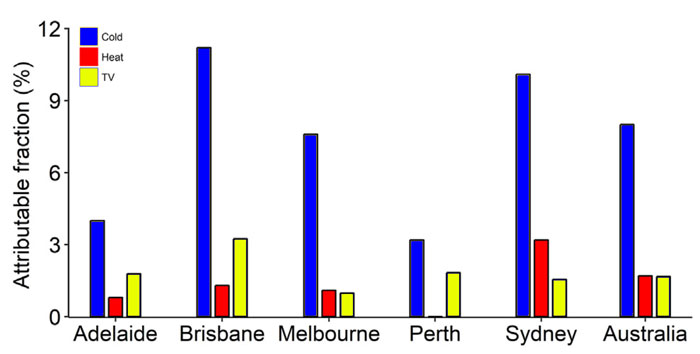| Tweet | Follow @co2science |
Paper Reviewed
Cheng, J., Xu, Z., Bambrick, H., Su, H., Tong, S. and Hu, W. 2019. Impacts of heat, cold, and temperature variability on mortality in Australia, 2000-2009. Science of the Total Environment 651: 2558-2565.
One of the key reasons why the United States Environmental Protection Agency (EPA) issued its Endangerment Finding labelling atmospheric CO2 as a dangerous air pollutant was because of concerns that rising CO2 is causing increases in heat-related deaths. A quick scan of the many peer-reviewed papers we have reviewed on this topic and posted on our website under the heading Health Effects: Temperature (Hot vs Cold Weather) makes it abundantly clear that this assertion is patently false. The latest study to confirm as much comes from Cheng et al. (2019), who analyzed the impacts of hot and cold weather, as well as temperature variability, on mortality across Australia.
More specifically, the six researchers utilized all-cause death and weather data for the five most populous Australian cities (Sydney, Melbourne, Brisbane, Adelaide and Perth) for the period 2000 through 2009, which cities account for over 60% of the total population of the country. They, by performing a series of statistical analyses (e.g., quasi-Poisson regression and simplified log-linear regression), the scientists were able to ultimate calculate the fraction (5) of deaths attributable to cold, heat and temperature variability.
The results revealed that, of the 708,751 total deaths during the study period, only about 6% (42,414) were due to heat, cold and temperature variability. The relative contribution of these three temperature exposures on mortality is shown in Figure 1 below. As depicted there, in the words of the authors, "most of the attributable deaths were from cold (61.4%), and then from temperature variability (28%) and heat (10.6%)," albeit there were noted differences between cities. Nevertheless, attributable deaths due to cold weather are six times the magnitude of those due to warm weather!
It was also noted that there was no temporal trend in mortality due to any of the three temperature exposure variables, which lack of trend occurred despite atmospheric CO2 concentrations rising by 5% over the period 2000-2009. If rising CO2 indeed was the danger the EPA claims it to be, this stable trend would not be happening. But it is!
The above findings thus demonstrate that the U.S. EPA claim that CO2 is a dangerous threat to human health is untrue for Australia. And numerous other studies conducted by researchers for locations all across the globe have similarly falsified this hypothesis for the entire planet.
Human mortality from cold weather events is far more deadly than from warm weather events. Thus, any warming of the planet should have a net positive impact on human mortality, with fewer people dying at the cold end of the temperature spectrum than who might die at the warm end. What will it take for the EPA and other climate alarmists to wake up and acknowledge these widespread and confirmed facts?

Figure 1. Attributable fraction of deaths due to cold, heat and temperature variability (TV) for five Australian cities and averaged for all of Australia. Source: Cheng et al. (2019).




